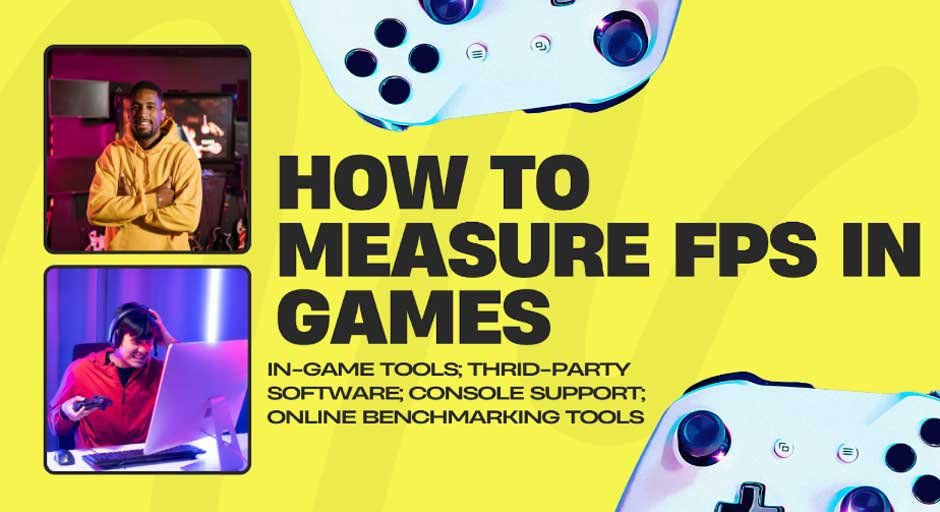Ever played a game that felt choppy, where every movement seemed to lag behind? Or watched a video where the action wasn’t smooth? That’s FPS at work—or, in those cases, not working well enough. FPS, or Frames Per Second, plays a crucial role in gaming and video performance, impacting smoothness, responsiveness, and immersion.
In this guide, we’ll break down “what is FPS”, why it matters, and how you can optimize it for a better gaming experience.
What Is FPS (Frames Per Second)?
The Basics
FPS stands for Frames Per Second, the number of individual images (or frames) displayed on your screen each second. Higher FPS means smoother motion, while lower FPS can result in choppy or laggy visuals.
Imagine a flipbook: the faster you flip the pages, the smoother the animation looks. FPS works the same way in games and videos.
How It Works
Your computer or console’s GPU (Graphics Processing Unit) is responsible for rendering frames. The more powerful your GPU, the more frames it can generate, resulting in higher FPS.
Common FPS Benchmarks
- 30 FPS: The minimum acceptable rate for most games. Playable, but not ideal for fast-paced action.
- 60 FPS: The standard for smooth gaming and video playback.
- 120 FPS or Higher: Preferred by competitive gamers for faster reaction times and reduced latency.
Why FPS Matters in Gaming

FPS isn’t just a number; it directly impacts how you experience a game. Here’s why it’s so important:
1. Smooth Gameplay
Higher FPS results in fluid animations and seamless transitions. In fast-paced games, this can mean the difference between dodging an attack or missing it entirely.
2. Responsiveness
With higher FPS, there’s less delay between your input (e.g., pressing a key) and the game’s response. This is critical in competitive gaming, where split-second reactions matter.
3. Visual Clarity
At lower FPS, fast-moving objects can appear blurry or jittery. Higher FPS ensures every movement is sharp and easy to follow.
4. Immersion
Choppy visuals can break immersion, pulling you out of the game world. Smooth, high-FPS gameplay keeps you fully engaged.
How to Measure FPS in Games
Measuring your FPS helps you understand your system’s performance and identify potential issues. Here’s how you can do it:

1. In-Game Tools
Many modern games include built-in FPS counters. Look for this option in the game’s settings menu (e.g., Fortnite, Call of Duty).
2. Third-Party Software
Several tools let you track FPS in real-time:
- FRAPS: A simple tool to monitor and record FPS.
- MSI Afterburner: Offers detailed performance metrics, including FPS.
- NVIDIA GeForce Experience: Includes an FPS counter for supported games.
3. Console Support
Some gaming consoles, like the PlayStation 5 or Xbox Series X, provide FPS details in performance settings.
4. Online Benchmarking Tools
Web-based tools like UserBenchmark can test your system’s gaming performance and estimate FPS for popular games.
Factors That Affect FPS
FPS isn’t just about hardware—it’s influenced by a range of factors:
1. Hardware Components
- GPU: The most critical factor in FPS performance. High-end GPUs deliver better FPS.
- CPU: Processes game logic and physics. A weak CPU can bottleneck FPS, even with a good GPU.
- RAM: Insufficient memory can cause stuttering and lower FPS.
2. Game Optimization
Poorly optimized games may have inconsistent FPS regardless of your hardware.
3. Display Settings
- Resolution: Higher resolutions demand more processing power, reducing FPS.
- Graphics Settings: Features like shadows, reflections, and anti-aliasing can impact FPS significantly.
4. Drivers and Updates
Outdated GPU drivers or unoptimized game patches can lead to FPS drops.
5. Network Latency (For Online Games)
While FPS itself isn’t directly affected by your internet connection, online gameplay can feel smoother when latency (ping) is low.
How to Optimize FPS for Gaming

Boosting your FPS doesn’t always require expensive upgrades. Here are some practical tips:
1. Adjust Graphics Settings
- Lower resolution (e.g., from 4K to 1080p) to reduce GPU strain.
- Disable resource-heavy features like anti-aliasing or motion blur.
- Use presets like “Medium” or “Low” for smoother gameplay.
2. Upgrade Hardware
- Invest in a more powerful GPU or additional RAM.
- Consider upgrading to an SSD for faster loading times and smoother performance.
3. Enable V-Sync or G-Sync
These settings synchronize your frame rate with your monitor’s refresh rate to prevent screen tearing.
4. Close Background Apps
Free up system resources by closing unnecessary apps running in the background.
5. Keep Drivers Updated
Regularly update your GPU drivers to ensure optimal performance.
6. Optimize Game Files
- Delete unused game mods or assets to free up system resources.
- Verify game file integrity using platforms like Steam or Epic Games Launcher.
High FPS vs. Low FPS: Real-World Examples
Let’s explore how FPS affects gameplay in real-world scenarios:
High FPS Experience
At 120 FPS, games feel incredibly smooth. Movements are fluid, and there’s minimal delay between your input and the on-screen response. Competitive gamers rely on this level of performance for faster reaction times.
Low FPS Challenges
At 20-30 FPS, gameplay becomes jerky and unresponsive. Actions like aiming or dodging feel delayed, and fast movements appear blurry. This can ruin the experience, especially in fast-paced genres like shooters or racing games.
Demonstrations
For those curious, many YouTube channels compare gameplay at different FPS levels. Search for “FPS comparison in gaming” to visually understand the impact.
How FPS Affects Different Genres of Games
1. First-Person Shooters (FPS Games)
Higher FPS is critical for precision aiming and faster reaction times, especially in competitive settings.
2. Racing Games
High FPS ensures smooth motion and reduces blurring during high-speed sequences.
3. Role-Playing Games (RPGs)
While not as fast-paced, smoother FPS enhances immersion in open-world exploration.
4. Real-Time Strategy (RTS) Games
Higher FPS allows for quicker and more responsive controls, essential during large-scale battles.
FAQs About FPS
1. Is higher FPS always better?
Yes, but only if your display supports it. For example, a 60Hz monitor won’t show more than 60 FPS, even if your system can produce more.
2. What’s the ideal FPS for gaming?
60 FPS is the standard for most games, while competitive gamers prefer 120 FPS or higher.
3. Can my monitor affect FPS?
Your monitor’s refresh rate caps the FPS you see. A 60Hz monitor limits visible FPS to 60, even if your system produces more.
4. How do I know if my hardware supports high FPS?
Use benchmarking tools to test your GPU and CPU performance. Check game requirements for recommended specs.
5. Does internet speed impact FPS?
Internet speed doesn’t directly affect FPS, but poor latency can make online gameplay feel laggy.
Conclusion
FPS is the backbone of a smooth and immersive gaming experience. Whether you’re a casual player or a competitive gamer, understanding and optimizing FPS can significantly enhance your gameplay.
From measuring FPS to tweaking settings and upgrading hardware, there’s always room to improve your system’s performance. Start by checking your FPS today—because when it comes to gaming, every frame counts.
Ready to level up your gaming experience? Take the first step by optimizing your FPS and enjoy a smoother, more responsive journey into your favorite games.












